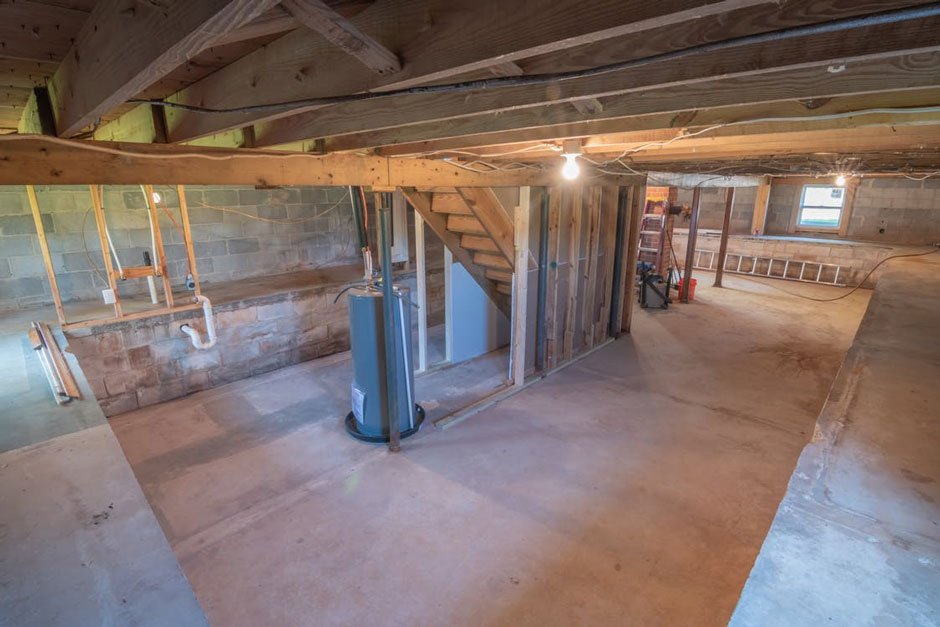Ever feel like your basement is just sitting there, filled with stuff you forgot you even owned? You’re not alone. A lot of homeowners use basements as storage zones or laundry areas—but that space has real potential. With the right planning, as recommended by the Campus Realtors team, you can turn your basement into a family room, home gym, office, or even a rental suite.
1. Check for Moisture and Pests First
Before you think about finishes, you need to make sure your basement is dry and clean. Moisture is one of the most common problems in basement spaces. Look for signs like musty smells, water stains, or peeling paint. Even small cracks in the foundation can let in water during heavy rain. If you notice anything concerning, it’s best to take care of it right away. A dry space is key to a successful conversion.
Along with moisture, pests are another issue that can pop up in basements. Bugs and rodents love dark, damp spaces. Sealing up your basement without addressing that can trap them inside walls or under floors. This is where a local pest control company can really help. They can inspect the space, treat any infestations, and give you tips to prevent future problems. It’s a small step that can save you time and money later on.
2. Understand Local Building Codes and Permits
Basement conversions aren’t as simple as adding furniture and paint. You’ll need to check with your city about building codes and permits. Rules vary by location, but most places require permits for electrical work, plumbing changes, or anything that affects the structure of the home.
Ceiling height is one of the first things inspectors look at. Most cities require a certain height—usually around seven feet—to approve the space for living. You may also need to add an egress window if you’re planning a bedroom. These are safety requirements, not just design preferences, so make sure to plan accordingly.
If your home is part of a homeowners’ association, check their rules, too. Some HOAs have specific guidelines for interior changes or how a home can be used. It’s always better to get approvals upfront rather than run into trouble mid-project.
3. Plan for Proper Insulation and Temperature Control
Basements are often the coldest part of the house. They sit underground, so they stay cooler year-round. That might be fine for storage, but it’s not ideal for a bedroom or living room. You’ll need insulation to make the space comfortable.
Start by insulating the walls and floors. If you’re working with concrete, add foam board or another moisture-resistant option. Make sure any gaps around windows and doors are sealed. This helps with both comfort and energy efficiency.
For heating and cooling, you have a few options. You could extend your home’s HVAC system if it has enough capacity. If not, consider a ductless mini-split system or portable units. The key is to make sure the temperature stays consistent so the space feels like the rest of your home.
4. Add Lighting That Makes the Room Feel Bright
Most basements don’t get a lot of natural light. Small windows, or no windows at all, can make the space feel dark and closed in. To fix that, you’ll need a smart lighting plan.
Start with overhead lighting, like recessed lights. They work well in low ceilings and spread light evenly. Wall sconces or track lighting can also help brighten up corners. Use warm bulbs to create a cozy feel, especially if the basement has concrete walls or floors.
If your layout allows it, consider adding or enlarging windows. Even one extra window can make a big difference in how the room feels.
5. Choose the Right Flooring for a Basement Environment
Flooring is another major decision when finishing a basement. Concrete is cold and hard—not the most comfortable underfoot. It’s also not great at handling moisture.
Choose materials that hold up well in damp conditions. Vinyl plank flooring is a popular choice. It’s water-resistant, affordable, and looks good. Tile is another option, especially in bathrooms or laundry areas. If you want a softer surface, try carpet tiles or area rugs over a moisture barrier.
Don’t forget to test for moisture before installing anything. You can do this by taping plastic sheets to the floor and checking for condensation. If you skip this step, you risk damaging your new floor.
6. Plan Your Layout Carefully
Basements often have unusual shapes or obstructions, so your layout needs to work around those. Utility panels, water heaters, or support columns can’t always be moved. You’ll have to get creative.
Start by deciding how you’ll use the space. A family room, guest suite, or home office each has different needs. Open-concept layouts work well in basements because they feel less cramped. Just be sure to include outlets and lighting in the right spots.
If you have to work around poles or equipment, consider building closets or dividing walls to hide them. You can also use furniture or built-ins to define zones within the room.
7. Factor in Storage Solutions
If your basement used to store all your holiday decorations and extra stuff, you’ll need to think about where those things will go. Storage is still important, even in a finished basement.
Use space under the stairs for bins or drawers. Add shelves along the walls, or consider tall cabinets that don’t take up much floor space. Built-in benches with storage inside are another smart option. Think ahead so your basement stays tidy once it’s finished.
Converting your basement into a living space is a smart move when done right. It can give you more room to spread out, entertain, or even earn extra income. But it does take planning. From moisture control to permits, heating to lighting, there’s a lot to think through before the real work begins. Take it one step at a time. Bring in the right professionals where needed. And most of all, make choices that will help your basement feel just as comfortable and functional as the rest of your home.






Leave a Reply